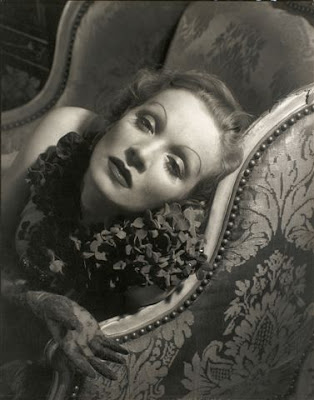 Actress Mary Heberden (1935), by Edward Steichen.
Actress Mary Heberden (1935), by Edward Steichen.(Courtesy Condé Nast Archive, New York
© 1935 Condé Nast Publications)
By Emma Trelles
The faces of both the famed and the forgotten share equal stature in the more than 200 celebrity and couture-focused photographs on display at the Museum of Art in Fort Lauderdale.
The collection unwinds across all of the museum’s first-floor galleries, yet the images found in Edward Steichen: In High Fashion – the Condé Nast Years, 1923-1937, which runs through April 11, are but a modest slice from the oeuvre of Steichen, whose career stretched across seven decades and was as storied as the lives of his subjects.
It included stints in lithography and painting, the co-founding of a gallery and the journal Camera Work with Alfred Steiglitz, a tenure as chief photographer for Vogue and Vanity Fair, and a late-in-life post as director of photography at the MOMA in New York. Steichen died in 1973 at the age of 93 after a lifetime of championing photography as a fine art form even as he served to commercialize it.
With that kind of pedigree, and with a roster of portraits that sandwiches models and movie stars alongside political players and writers, one might imagine the exhibit to be a tad more exciting than it comes across. There is, after all, much to ogle here, beginning with a nifty installation that divides each group of portraits by decades, painted as tabs on the walls and offering the visual equivalent of flipping through an enormous datebook.
What follows is an array of early 20th-century icons, decked in all manner of smart silk suits and Chanel evening gowns, diamond cuffs designed by Cartier and Perugia T-strap slippers filigreed in blossoms.
 Actress Gloria Swanson (1924), by Edward Steichen.
Actress Gloria Swanson (1924), by Edward Steichen.(Courtesy Condé Nast Archive, New York
© 1930 Condé Nast Publications)
Here is the lace-veiled face of Gloria Swanson, long before her ravings on Sunset Boulevard, lips precisely painted and watery, pale eyes a hypnotic combination of directness and timidity. Actress Marion Morehouse is so stylized in a bouffant dress she appears to be carved from ivory and onyx. With a silver-tipped cane, H.G. Wells resembles the Wizard of Oz; a young Joan Crawford shares a lounge chair with Douglas Fairbanks by the shore.
There is a disheveled Yeats, a plotting Colette, a pensive (what else?) Winston Churchill. Really, the population photographed by Steichen is astonishing, although it shouldn’t be. These were not only the people he documented; they were his social peers and playmates.
In this selection from the Condé Nast archives, organized by the Musée de l’Elysée, the Foundation for the Exhibition of Photography in Minneapolis, and the International Center of Photography in New York, Steichen often plays with textures and surfaces, whether juxtaposing a slender arm with a brocaded skirt or playing with cigarette smoke and shadow and glowing kinds of light.
 Marlene Dietrich (1934), by Edward Steichen.
Marlene Dietrich (1934), by Edward Steichen.(Courtesy The Richard and Jackie Hollander Collection,
Los Angeles © 1934 Condé Nast Publications)
His standouts, however, are when he marries his artifice with essence of his subjects, as he does with Amelia Earhart, for example. Steichen poses her with hands tucked boyishly beneath her knees, rocking back and looking sideways at the camera, radiant and natural, a woman more of this time than her own. Steichen perfectly captured her self-sustaining nature.
Alas, there are not enough of these inspired pictures. Somewhere around 1927, the distinctness of some of Steichen’s finer images dissolves alongside row after row of anonymous models and long-faded leading men and starlets. There is simply too much here, and not enough of it is memorable.
It’s questionable whether we really need to see 200 instances, many of them redundant, of how Steichen pioneered fashion photography, and cultural portraiture to some degree, although it is worth mentioning that the latter was executed more profoundly by almost-contemporary Irving Penn and with more wit, later on, by Richard Avedon.
The show might have fared better had it included a broader gathering of Steichen’s works, such as his haunted cityscapes or the stark abstractions he made from the common shapes found in natural settings: the ovals of leaves, the whorl of a shell. The eye needs more than prettiness and celebrity to sustain itself.
Emma Trelles is a South Florida-based arts writer.
Edward Steichen: In High Fashion – The Condé Nast Years, 1923-1937 runs through April 11 at the Museum of Art Fort Lauderdale. Open daily from 11 a.m. to 5 p.m., except closed Mondays and open until 8 p.m. Thursdays. Tickets: $10 adults, $7 seniors, military members, children 6-17. Call 954-525-5500 or visit www.moafl.org.
